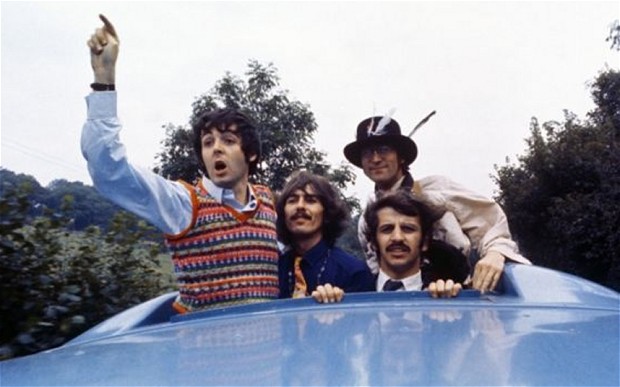
By 1964, many pop and rock n’ roll artists had already taken a diversion into celluloid, although largely without critical acclaim. Being The Beatles, and finding the films of Cliff and Elvis fairly embarrassing, the Fab Four wanted theirs to be credible. ‘’We wanted ours to be good,’’ said Paul McCartney.
Demand for a Beatles film was high, yet rather than churn out another generic ‘Let’s do the show right here, gang!’ 60’s musical, The Fabs took their time to find both the right script and the right director.
1. A Hard Day’s Night (1964)

The first wise choice that The Beatles made for A Hard Day’s Night was to hire Alun Owen (who they were fans of) to write the script. He travelled around with the boys before and after concerts and picked up on their humour, charm and personalities, which he then put into his razor sharp screenplay.
Each Beatle was given his own, distinctive personality (largely accurate but exaggerated) for the big screen: John- the sarcastic wit, George- the dour cynic, Paul- the charmer and Ringo-the loveable clown. Their second masterstroke was hiring Richard Lester as director. All four Beatles loved his Running, Jumping, Standing Still film from a few years earlier, recognising a shared love of surreal humour and an irreverence for convention.
The now iconic train scenes would be filmed between London and Minehead, with the Fabs using microphones hidden in their jackets to record their lines (many retakes were needed due to sound problems). These train segments contain many memorable moments, including the Fabs gentle mocking of authority and the I Should Have Known Better section, where The Beatles play cards and sing to a group of captivated school girls. One of whom (Pattie Boyd) would go on to marry George Harrison.
The rest of the film follows a fictional day in the life of the famous foursome as they meet and then lose Paul’s troublesome Grandfather (‘‘He’s very clean, isn’t he?’’), insult trend-spotters, escape the boredom of their hotel stays, nearly cause a TV Producer (played by Victor Spinetti) to have a heart-attack and play a concert for their screaming fans. While Ringo (the unexpected star of the film), causes unintentional havoc around the streets of London.
The soundtrack, a timeless, melodic pop joy, features 13 Lennon/McCartney originals. The whole film has an energy and urgency that is difficult to resist. Over 50 years since it was filmed, A Hard Day’s Night feels fresh, youthful, vital and full of life-affirming fun. Today it averages 98% critical approval on Rotten Tomatoes and has been acclaimed as one of the great British films of all time by The BFI.
2. Help! (1965)
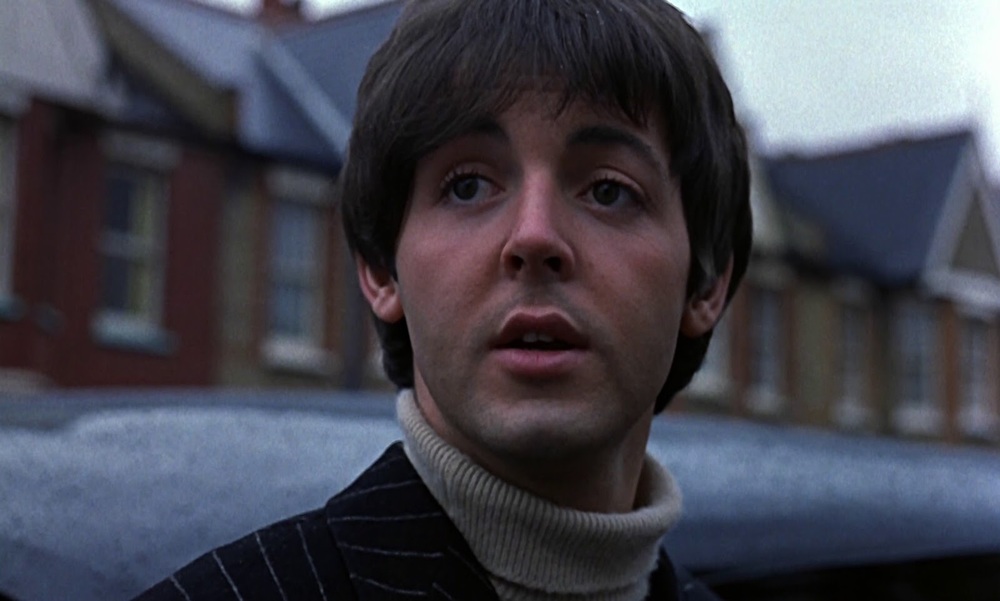
For their second feature film, The Beatles again teamed up with director Richard Lester. This time the budget was larger, would feature exotic locations and be shot in (shock horror) glorious technicolour. The film would take The Fabs from England to The Bahamas and on to Austria in a zany 60’s pop-art adventure with a crazy plot involving an Eastern religious cult’s attempts to sacrifice Ringo!
Help! features a wide range of British acting talent, including Eleanor Bron, Victor Spinetti (again), Roy Kinnear and Leo McKern. However, these established actors had their patience tested to the limit by The Beatles newly found love of pot. Stoned for much of the filming, often forgetting lines and falling in to fits of giggles, they were, by all accounts, not taking filming too seriously. This undiscipline drove British comedy stalwart Frankie Howerd to despair and his scene was cut.
Richard Lester pulled out all the stops when filming Help! It is crammed full of wacky visual ideas, sharp editing and surreal humour. Indeed, it could be argued that Help! invented the pop video and The Monkees TV series. George Harrison was so fascinated by the sitar( featured in the restaurant scene) that he acquired one and started on his own Eastern quest that would dominate the rest of his life.
The Bahamas scenes are one giant, vibrant, youthful pop video, while the Austrian ski-ing sections feature the fantastic Ticket To Ride sequence, aswell as George (as a Salvation Army musician) surreally eating one of the percussion cymbals that he is playing!
The soundtrack, once again composed by lennon /McCartney (this time with some welcome Harrison additions), is another joy for the ears. It marks the point where The Beatles were maturing and breaking away from their teen pin up/pop success into a world of pure creativity and musical influence that would stretch over the rest of the 60’s and beyond.
Now widely regarded as inferior to A Hard Day’s Night, yet still hugely influential in popular culture, Help! is worth a watch for any pop fan. After all, it’s the film that invented MTV.
3. Magical Mystery Tour (1967)
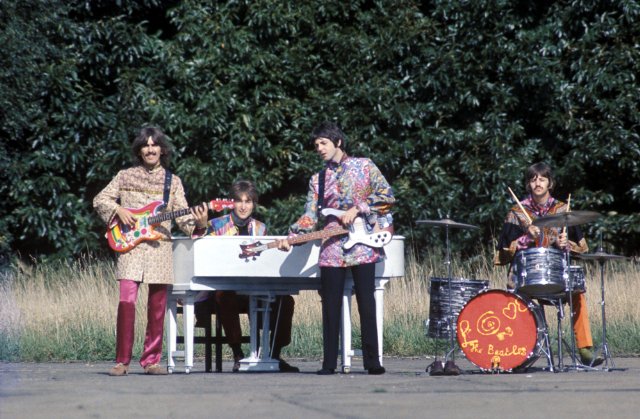
By 1967’s Magical Mystery Tour, The Fab Four were unrecognisable from the happy go lucky mop tops of A Hard Day’s Night of only 3 years earlier. They had conquered the musical world and changed it beyond recognition. Their influence on other musicians and on society itself was at an absolute peak. However, all was not rosy in The Beatle garden. Weeks before shooting, their long-term manager Brian Epstein had tragically died in London.
Determined to keep the band working, the ever resilient McCartney persuaded the others to go ahead with their next planned film, Magical Mystery Tour. Paul had come up with the initial idea for the film, loosely based on Ken Kasey’s infamous hippy bus tour around America, entitled, The Merry Pranksters Search For a Cool Place.
No script was forthcoming for the film, so McCartney sketched out rough ideas on a simply drawn circle that was divided into segments; a song here, a magician there. Without Richard Lester’s help, this ad hoc way of planning carried on all the way through filming in that hazy, lazy, anything goes Summer of Love.
There is no real plot or script to speak of. The Beatles head off on a road trip where ‘strange things happen’ (at the whim of four magicians played by themselves). They take with them (and encounter) a group of odd-ball characters along the way that include Ivor Cutler, various midgets, several magicians, The Bonzo Dog Dooh Dah Band and Victor Spinneti.
On their magical coach journey, the Fabs stop and perform some wonderful psychedelic songs, including the fantastic I Am The Walrus sequence, which comes complete with surreal imagery of The Beatles, a walrus, dancing policemen and chanting egg men.
John Lennon (in a particularly far-out scene taken from a dream he had had) is shown as a waiter who shovels piles of spaghetti onto a crying, large lady’s dinner plate, while a midget takes photos. It’s that kind of an anything goes, stream of consciousness film.
Shown (rather foolishly) in black and white on Boxing Day by the BBC, when most people in Britain were waiting for the traditional light-hearted variety shows, the acid-drenched images were enough to make Middle England choke on their turkey bones! The critics had a field day, forcing McCartney to go on TV and defend their movie. ‘’You couldn’t call The Queen’s speech a gas either,’’ he muttered in defiance.
Not only did Magical Mystery Tour influence the imagery of Monty Python, but the latest Blu-Ray version has no less than Martin Scorcese singing the film’s praises.
4. Yellow Submarine (1968)
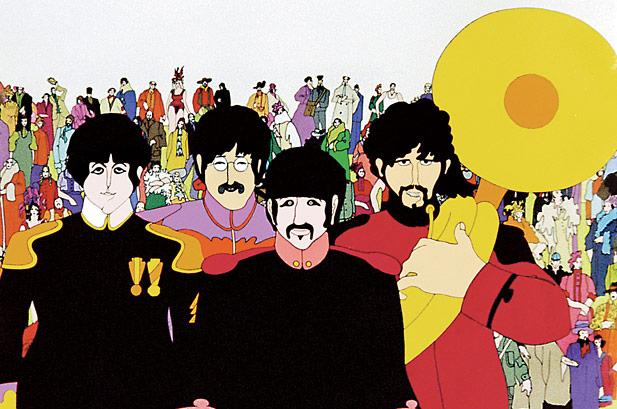
The Beatles approached the filming of Yellow Submarine purely as a way of completing their three film contract with United Artists. Initially they showed little interest but later changed their minds when they saw the work of art that had been produced.
The film’s plot, written by Lee Minoff , is loosely based on The Beatles hit song of the same name. The cartoon Fab Four are recruited by an old seaman (Old Fred) to travel with him in his Yellow Submarine to save Pepperland from the evil Blue Meanies and sing a few songs on the way.
Fittingly for a Beatles film, the animation is truly ground-breaking. Led by Heinz Edelmann and director George Dunning, along with a team of new and unsung young artists, they managed to produce (on a budget of only around $1 million) a series of magnificently imaginative pop art creations, using techniques that had never been used before (and haven’t since).
The Beatles (probably still cringing at The Beatles cartoon series that ran through the mid-60’s) declined to provide the voices for the characters, so a talented cast including Lance Percival and Dick Emery were recruited to mimic The Fabs. ‘’Our voices are pretty cartoony anyway,’’ drly observed George Harrison years later.
The animators (all Beatle fans wanting to do their very best for them) were given pretty much a free hand and, on this occasion, trusting artists to create without interference really paid off. Music and image combine beautifully throughout-From Eleanor Rigby’s urban poetry to Lucy In The Sky With Diamonds mind bending psychedelia, to George Martin’s orchestral pieces and the grand, vibrant finale of It’s All Too Much, the film is a trip in more ways than one.
Upon visiting the animation studios to monitor the progress of the film, the Fab Four became very enthusiastic about the movie. John Lennon later claimed to have made suggestions to the animators about characters and dialogue but wasn’t credited. Infact, much of the film’s humour was provided (also uncredited) by Liverpool poet, Roger McGough. All four Beatles did end up appearing in the movie, via a humorous filmed sequence that appears at the end of the film(filmed at the start of 1968).
The witty script, original animation and array of imaginative characters would prove an influence on the likes of The Simpsons and the Toy Story franchise, along with any animation that can be viewed and enjoyed on different levels by both children and adults. Indeed, The Simpsons have now referenced Yellow Submarine directly on more than a few occasions. As George Harrison commented in 1999, ‘Yellow Submarine is a classic.’’
5. Let It Be (1970)
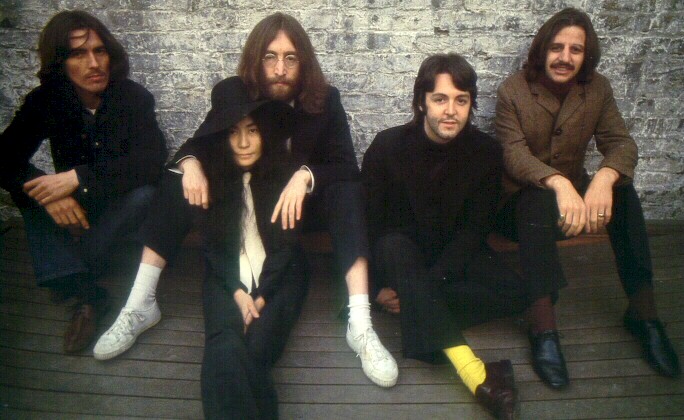
Directed by Michael Lindsey Hog, The Beatles final film was supposed to capture The Fab Four creating and then recording a new album. Instead, it (often bleakly) captured the break up of the world’s biggest band.
Filmed in 1969, Let It Be shows The Beatles as a bearded, world-weary collective of individuals, with the addition of one new figure; John’s girlfriend, the ever present, Yoko Ono. The tension between the four Beatles (largely due to Yoko invading their once fiercely protected working-environment-at Lennon’s insistence) is palpable on screen, particularly in the early Twickenham studio scenes (a cold, spacious environment, not designed for relaxed creativity).
We are even privy to an argument breaking out between George and Paul during rehearsals, while Ringo looks utterly depressed and John is too busy with his new love to even notice. George Harrison eventually quit the group for almost two weeks shortly after filming began, only to be persuaded to rejoin by the promise of quitting Twickenham and relocating to their Apple HQ.
Thankfully, the change of setting benefits everyone greatly. Once the group start working on a hot new McCartney track (Get Back) with Billy Preston on keyboards (brought in to help keep the peace by George), their differences evaporate and we are reminded just why they are the biggest band of all time. They even start enjoying themselves again.
This is followed by the fantastic roof-top gig, performed unannounced in London on 30th January, 1969 on top of their Apple Corp building at 3 Saville Row, to a bewildered audience of lunchtime commuters below. This was their final live performance and they didn’t disappoint.
The Beatles deliver a perfect, highly spirited, raw performance in the London cold, as cameras capture the band from all angles, while others picture the mayhem in the streets below. Inevitably, after complaints from local businesses, police eventually turn up to stop the show and spoil the fun.
By the time the Let It Be film was released to the world in May, 1970, The Beatles were no more and no one from the band could face promoting it. Paul McCartney did turn up to collect an Oscar for best soundtrack the following year but the general feeling amongst the four was that the sessions were a painful reminder of difficult times.